Since 1931, the Chief Historian of the National Park Service (NPS) has provided guidance and direction to NPS parks, programs, historians, and the American people on the importance of verifying historical events and interpreting the significance of America’s historic places. The Chief Historian also provides national leadership in setting and implementing NPS standards and guidelines relating to the documentation of historically significant properties.
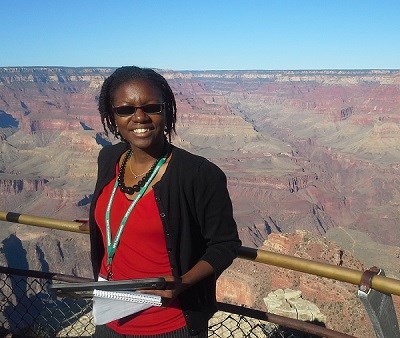
Turkiya L. Lowe (2017 - present) is the Chief Historian of the National Park Service and Deputy Federal Preservation Officer. Prior to this position, Dr. Lowe served as the National Park Service Southeast Region (SER) Chief Historian and Chief of the SER Cultural Resource Research and Science Branch from mid-2012 to early 2017. While serving in those positions she oversaw the region-wide History and Cultural Anthropology Programs for 67 National Parks located within nine states, Puerto Rico, and the U.S. Virgin Islands. In addition, her portfolio included providing assistance to state and local governments, private organizations, and individual stewards to identify, protect and preserve important places through the National Historic Landmarks Program, the National Register of Historic Places, the Historic Surplus Property Program, and other NPS community partnership programs. She also had the privilege to steward park resources during a 120-day detail as Acting Superintendent of Cane River Creole National Historical Park in Natchitoches, LA in early 2016. Prior to serving as the SER Chief Historian, Dr. Lowe worked in SER’s Office of Interpretation and Education from early 2011 to mid-2012, where she was the Regional Program Manager for the National Underground Railroad Network to Freedom Program.
Before moving to SER, Dr. Lowe served in the National Park Service's Washington Support Office (WASO) where she was Program Coordinator for the Cultural Resources Diversity Internship Program and an Historian and reviewer for both the National Historic Landmarks and National Register of Historic Places Programs.
During her graduate school years, Dr. Lowe worked as a Principle Investigator on historic preservation projects with the National Park Service Pacific West Region’s (PWR) Seattle Support Office, investigating the history of civil rights in the Pacific Northwest and identifying associated historic properties for potential preservation and interpretation efforts.
Dr. Lowe received her BA in History from Howard University in Washington, DC, and her MA and PhD in History from the University of Washington in Seattle.
- Video interview with Dr. Lowe about her career, her job as Chief Historian of the National Park Service, and her priorities for telling the Nation’s stories. C-Span/American History TV. 2018
- Conversation with Dr. Lowe about broadening how the National Park Service tells the American story. The 19th*. 2021
Past Chief Historians
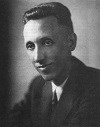
Verne E. Chatelain (1931-1936), the first Chief Historian of the National Park Service (NPS), was hired by Director Horace M. Albright the year after the NPS acquired its first eastern historical areas, Colonial National Monument and George Washington Birthplace National Monument. His role in guiding and overseeing NPS historical activities increased dramatically with the influx of historic properties transferred from other federal agencies in 1933. Chatelain prepared the first criteria for historical additions to the National Park System and favored a thematic approach to the system's expansion, arguing that it should include all types of areas that are historically important in the development of the United States. The creation of the Historic Sites Survey (now the National Historic Landmarks Program) in 1935 also expanded the role of the Chief Historian in new directions. Chatelaine resigned his position in 1936 to join the Carnegie Institution of Washington and later became a Professor of History at the University of Maryland. Verne Chatelaine died in 1991.
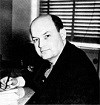
Ronald F. Lee (1938-1942, 1946-1951 [1942-1946 served overseas in the U.S. Army Air Force]) came from the University of Minnesota to Shiloh National Military Park as a Civilian Conservation Corps (CCC) historical foreman in 1933, eventually moving to Washington DC to work on the development of the Natchez Trace Parkway. In 1935 Lee became an Assistant Director of Historic Sites under Verne E. Chatelain, becoming Chief Historian after Chatelaine's retirement. From 1951 to 1960 he was the Assistant Director of Research and Interpretation and later Chief of Interpretation and from 1960 to 1966 he was Regional Director of the Northeast Region. Lee was notable for establishing connections and building relationships that extended the reach of the NPS beyond the parks and also expanding the definition of an NPS historic site. He was instrumental in the creation of the National Trust for Historic Preservation in 1947-49 and in 1959 the creation of a new type of federal historic recognition - National Historic Landmarks. In retirement Lee served as a special assistant to the Director of the National Park Service and wrote definitive histories of the Antiquities Act of 1906, the Origin of the National Military Park Idea, and the Evolution of the National Park System. Today, Lee is considered one of the central figures in the mid-20th century U.S. historic preservation movement. Ronald "Ron" Lee died in 1972.
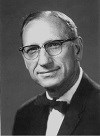
Herbert E. Kahler (1942-1946, 1951-1964) came from the University of Minnesota to Chickamauga and Chattanooga National Military Park as a Civilian Conservation Corps (CCC) historical foreman in 1933. From 1934 to 1940 he served as Superintendent of Castillo de San Marcos National Monument and Morristown National Historical Park before coming to Washington, DC as Ronald F. Lee's assistant. During WWII Kahler served as Chief Historian while Lee was serving overseas in the U.S. Army Air Force. When Lee left in 1951 to become Assistant Director for Research and Interpretation, Kahler became Chief Historian. During his tenure he oversaw the National Park Service's expanded historical development and interpretation under Mission 66 and the implementation of the National Historic Landmarks program. Kahler was a founder of the Eastern National Park and Monument Association in 1947, its chairman from 1948 to 1964, and its Executive Secretary from his NPS retirement in 1964 until 1973. Kahler continued to work with Eastern National until his death in 1993.

Robert M. Utley (1966-1972) began his NPS career in 1947 as an historical aide at Custer Battlefield National Monument during his college summers. After attending graduate school at Indiana University Utley serving first in the U.S. military and then as a civilian as an historian in the historical section of the Joint Chiefs of Staff in the Pentagon. He returned to the NPS in 1957 as Regional Historian for the Southwest Region. In 1964 he moved from Santa Fe, NM to Washington, DC to become Chief of the Division of History Studies, taking over the NPS history division from Herb Kahler who retired that year. When Charlie Porter, NPS Chief Historian, retired in 1966 Utley also took on the title and duties of the Chief Historian of the NPS. In 1972 he left the Historic Studies division to become Director of the Office of Archeology and Historic Preservation and then Assistant Director of the NPS for Park Historic Preservation. Utley played key roles in implementing the National Historic Preservation Act of 1966 and advancing NPS preservation policies. He left the NPS in 1977 to become Deputy Executive Director of the Advisory Council on Historic Preservation. After retiring from that position in 1980, he devoted his full energies to the history of the American West, publishing 23 books on various historical topics and winning himself a national reputation. Robert "Bob" Utley died in 2022.

A. Russell Mortensen (1972-1973) was director of the Utah State Historical Society, director of the University of Utah Press, and a professor of history at the University of Utah before joining the NPS in 1970 as Chief of the Branch of Park History under Robert M. Utley. He served only briefly as Chief Historian before becoming Assistant Director in charge of the Office of Archeology and Historic Preservation, which was then confined to programs largely outside the National Park System. As a founder and past president of the American Association for State and Local History, he had many connections that facilitated relationships between the National Park Service and state and local preservation interests. He retired at the end of 1975 and died in 1995.
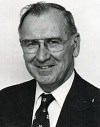
Harry W. Pfanz (1974-1980) left the U.S. Army's Historical Office in 1956 to become the historian at Gettysburg National Military Park. He completed his Doctorate in History at Ohio State University while at Gettysburg and moved in 1966 to Jefferson National Expansion Memorial [Gateway Arch National Park], eventually becoming Superintendent in 1968. He came to Washington, DC as Chief of the Eastern Service Center's historical staff in 1971 and became Chief of the Branch of Park History under A. Russell Mortensen when the Center moved to Denver, CO in 1972. As Chief Historian from 1974 until his retirement in 1980, Pfanz was active in planning for the American Revolution Bicentennial and in refining NPS preservation policies and guidelines. In retirement he became a preeminent Gettysburg scholar, publishing three acclaimed books on the battle. Harry Pfanz died in 2015.
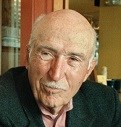
Edwin C. Bearss (1981-1994) After serving with the U.S. Marine Corps in WWII and working as an historian for the U.S. Army's Office of the Chief of Military History, Bearss came to the NPS in 1955 as an historian at Vicksburg National Military Park. In 1958 he was promoted to the position of Regional Research Historian for the Southeast Region. He came to Washington, DC in 1966 as a Research Historian on Chief Historian Utley's staff and remained duty-stationed there after being reassigned in 1970 to the Eastern Service Center and in 1972 to the Denver Service Center. During his time as a Research Historian in Washington, DC Bearss was closely involved in the addition of multiple park units to the NPS including Bighorn Canyon, the Eisenhower Farm, President Lyndon B. Johnson’s Ranch, and Fort Point. He served as Chief Historian from 1981 to 1994 and as Special Assistant to the Director for Military Sites from 1994-1995. Upon his retirement in 1995 he was given the unique title of National Park Service Historian Emeritus. A renowned authority on the U.S. Civil War, he devoted much of his attention to battlefield preservation and interpretation. As Chief Historian he played a key role in launching major battlefield preservation initiatives and in retirement he remained a nationally prominent historian, battlefield tour leader, and lecturer up until his death in 2020.
- Edwin Cole Bearss: History's Pied Piper. C-Span. May 24, 2003

Dwight T. Pitcaithley (1995-2005) began his NPS career in 1963 as a seasonal laborer at Carlsbad Caverns National Park. After receiving his Doctorate in History from Texas Tech University in 1976, he was offered a position as a research historian with the National Park Service Southwest Regional Office in Santa Fe, NM followed by appointments as Regional Historian in Boston (1979-89) and Chief of Cultural Resources for the National Capital Region (1989-95). As Chief Historian he focused on developing training programs for historians and interpreters, facilitating the incorporation of new scholarship into park interpretive programs, and creating partnerships between the National Park Service and other humanities-based institutions. Dwight Pitcaithley retired from the NPS in 2005 and is a College Professor of History at New Mexico State University.
Interview with Dwight T. Pitcaithley. The Historian, vol. 62, no. 4, 2000, pp. 821–34.
Martin Perschler (2006-2007) received his Doctorate in Architectural History from the University of Virginia and worked for Johns Hopkins University Press before joining the National Park Service Heritage Documentation Programs in 1999 as the Architectural Collections Manager. He was appointed Assistant Editor of CRM: The Journal of Heritage Stewardship in 2005 and Editor of the Journal in 2006 as well as Chief Historian of the National Park Service. Perschler left the NPS at the end of 2007 to work for the U.S. Department of State and is currently Director of the Ambassadors Fund for Cultural Preservation.

Robert K. Sutton (2007-2015) began working with the National Park Service as a park ranger at Fort Vancouver National Historic Site. He received his Doctorate in History from Washington State University and went on to work as an architectural historian with the NPS Southwest Regional Office in Albuquerque, NM; an historian with Independence National Historical Park; a museum curator with the Oregon Historical Society; an historian with Oregon State Parks; and an Assistant Professor at Arizona State University. He also directed the school’s Historic Preservation and Historical Administration Public History programs. Sutton was an Assistant Superintendent and historian at National Capital Parks-East in Washington, DC and in 1995 he became the Superintendent of Manassas National Battlefield Park where he initiated a symposium on the Civil War that laid out a path for broadening interpretation at National Park Service Civil War sites to include the causes and effects of the war. As Chief Historian he encouraged Civil War battlefields to expand their interpretive programs to focus more attention on social, economic, and political issues during the Civil War Era. Since retiring in 2016 he has published several books on both WWII and the U.S. Civil War and serves as a consultant to the American Battle Monuments Commission.
Last updated: October 3, 2024
